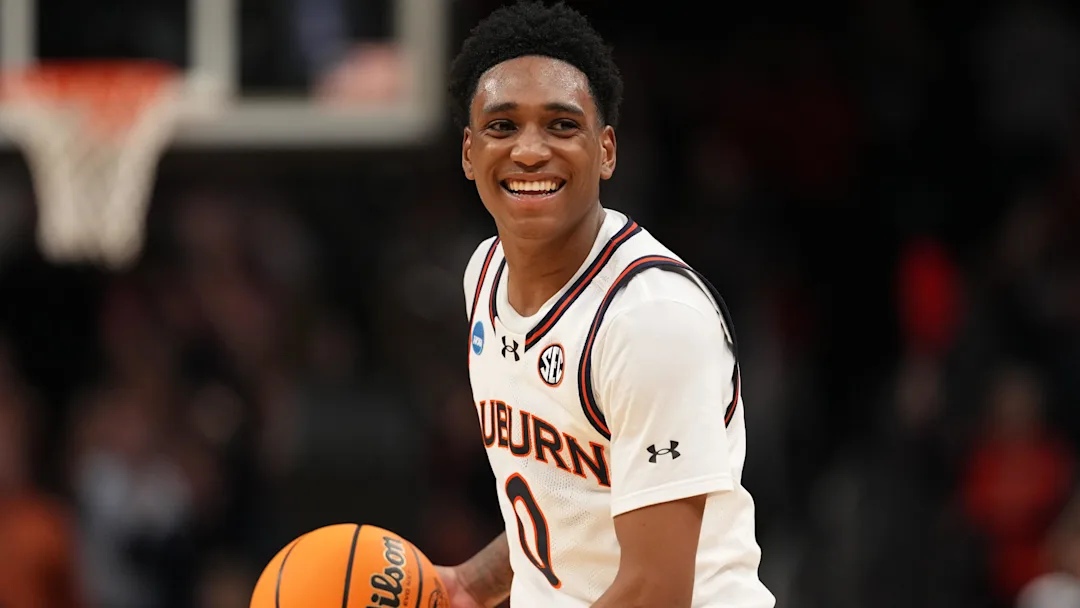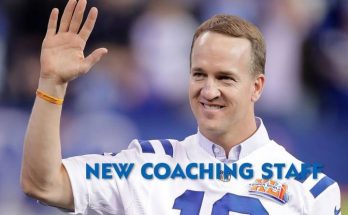In a surprising turn of events that has sent ripples through the basketball community, one of college basketball’s most intriguing and often overlooked talents has made the bold decision to withdraw from the NBA Draft. This announcement comes on the heels of the player being voted as the most underrated prospect in this year’s draft class—an accolade that speaks volumes about his skill, potential, and the respect he has garnered among scouts, coaches, and analysts despite flying under the radar in mainstream discussions.
For years, the narrative surrounding NBA hopefuls has largely centered on hyped recruits, blue-chip prospects, and household names who dominate headlines and social media buzz. Yet, basketball’s rich history reminds us time and again that some of the game’s most remarkable talents emerge from the shadows of the spotlight, quietly honing their craft and waiting for their moment to shine. This college star fits squarely into that tradition—a player who, while lacking the fanfare of top lottery picks, possesses an arsenal of skills and intangibles that make him a formidable force on the court.
The decision to withdraw from the draft is not one made lightly. For many athletes, declaring for the NBA Draft represents the culmination of lifelong dreams and the gateway to a lucrative professional career. However, the complexities of the modern draft process and the highly competitive nature of the NBA landscape often compel prospects to carefully weigh their options. This player’s choice to step back from the draft reveals a strategic mindset that values growth, readiness, and long-term success over immediate gratification.
Scouting reports have consistently praised this star’s versatility, basketball IQ, and relentless work ethic. Despite these accolades, many have questioned whether he was physically ready to compete at the NBA level or if he needed additional time to refine his game. By withdrawing, he is sending a clear message that he intends to return to college for at least another season, using the opportunity to sharpen his skills, increase his draft stock, and prove beyond doubt that he belongs among the elite.
The context of his recognition as the “most underrated prospect” adds an extra layer of intrigue. Being underrated means that his talent and potential are not fully appreciated by the general public or even some evaluators. This label often comes with a chip on the shoulder—a motivating factor that drives athletes to push harder and silence doubters. His journey serves as a testament to perseverance and the value of hard work, reminding us that success in sports is not always about the flashiest highlights but about consistency, determination, and heart.
This development also raises important questions about how NBA teams evaluate talent and the role of exposure in shaping draft perceptions. While analytics and advanced metrics have transformed scouting, the human element—intangibles like leadership, composure under pressure, and coachability—still plays a crucial role. It’s possible that this player’s unique strengths have been underappreciated simply because they don’t always translate into eye-popping stats but rather contribute to team success in subtler ways.
His withdrawal will likely prompt a wave of renewed attention and analysis in the coming months. Fans, analysts, and scouts will be eager to see how he performs in the next college season, and whether he can build upon the foundation that earned him this underrated label. Many will watch to see if he can translate his skills into dominance, lead his team deeper into the postseason, and further validate the confidence that those who know his game already have in him.
Moreover, this situation highlights the evolving nature of the NBA Draft and the decisions faced by prospects in today’s basketball ecosystem. The draft is no longer just about who can jump highest or score the most points; it’s about fit, potential, and the holistic development of a player. With G League options, two-way contracts, and international opportunities expanding, players have more pathways than ever to reach the NBA on their own terms.
His choice underscores a growing trend where players prioritize development and readiness over jumping too soon into the professional ranks. It sends a powerful message to other college athletes and young prospects that sometimes patience and careful planning can pay greater dividends than rushing headlong into uncertainty.
Critics may argue that withdrawing from the draft could be seen as a lack of confidence or fear of failure. However, this perspective fails to appreciate the strategic thought process behind the decision. Confidence does not always mean rushing into the next stage; it can also mean having the wisdom to recognize when more preparation is needed to ensure lasting success.
This athlete’s story is a reminder that the path to the NBA is rarely linear or predictable. It is filled with twists, turns, and tough choices that test not only physical ability but mental resilience and character. By stepping back now, he is showing maturity and an understanding that a successful professional career is a marathon, not a sprint.
His coaches and teammates have publicly supported his decision, emphasizing their belief in his potential and their excitement to see him continue to develop. This support network plays a vital role in an athlete’s journey, providing encouragement, guidance, and stability in the often tumultuous world of college sports.
As the college basketball season approaches, all eyes will be on this player to see how he responds to this pivotal moment. Will he elevate his game to new heights? Will he emerge as a leader who transforms his team’s fortunes? Can he shake the “underrated” label and enter the next draft as a bona fide star? The answers to these questions will define not only his career but also his legacy.
For fans of the sport, this narrative adds a compelling subplot to the upcoming season. Stories of underdogs and overlooked talents rising to prominence resonate deeply, reminding us why basketball captivates so many around the world. It’s about more than just points and rebounds; it’s about human spirit, ambition, and the relentless pursuit of greatness against the odds.
In the broader scope, his decision also encourages a reexamination of how talent is evaluated and celebrated. It challenges scouts, media, and fans alike to look beyond conventional metrics and recognize the diverse ways players contribute to the game. Basketball, after all, is a team sport, and the greatest teams often feature players whose value transcends the stat sheet.
This college star’s journey is far from over. With renewed focus and determination, he is poised to rewrite the narrative surrounding him. The label “most underrated” may soon be replaced by “most improved,” “most dominant,” or even “most indispensable.” Whatever the future holds, one thing is clear: his story is a powerful reminder that greatness often comes to those who are willing to wait, work, and prove themselves on their own terms.
In the end, his withdrawal from the NBA Draft is less a retreat and more a strategic advance. It is a declaration of confidence in his own abilities and a commitment to the hard work needed to achieve his dreams. The basketball world should take notice, because when this star returns, he may very well shine brighter than anyone expected.



